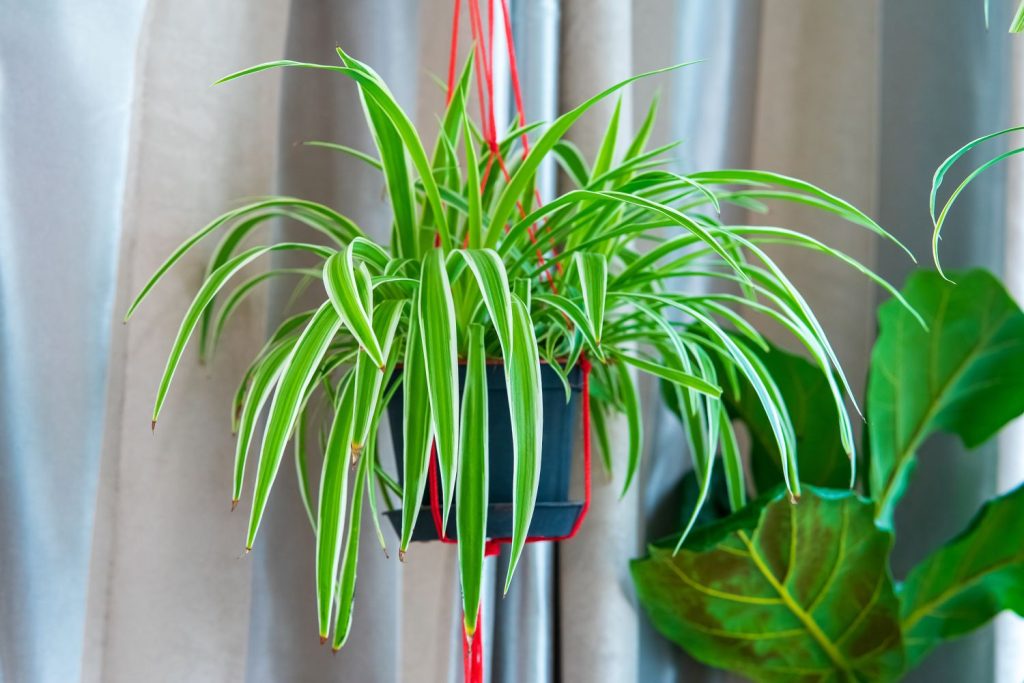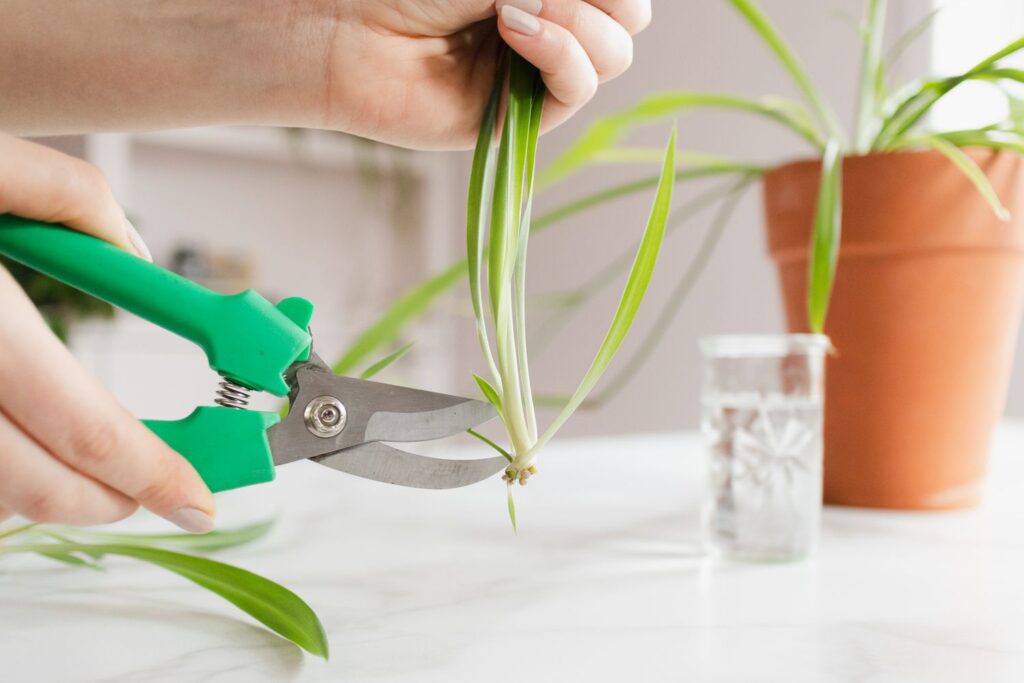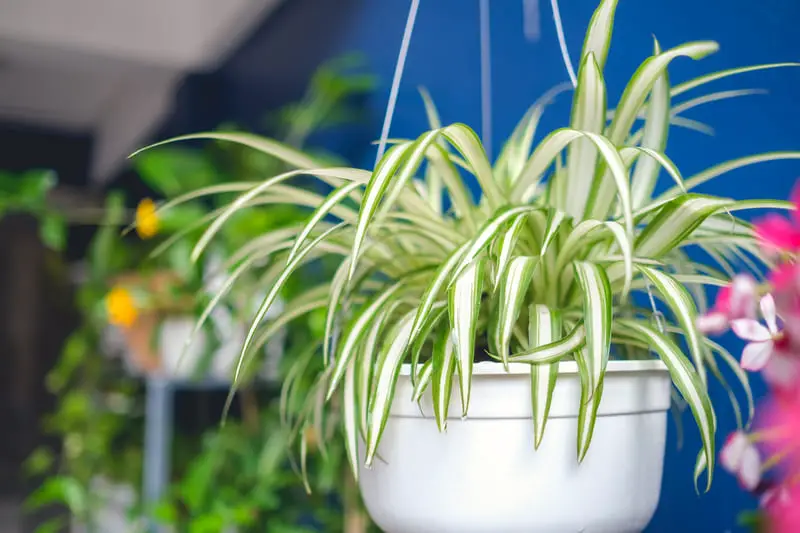Plant A Leaf

How to Grow and Care for Spider Plant
The Spider plant (Chlorophytum comosum)is among the most adaptable houseplants, and is very easy to grow, Best Indoor Live Plant. A graceful plant that makes a statement anywhere—from a tabletop to a mantle, or with its lovely arching leaves as a hanging plant. The Spider Plant is also known for its tremendous air purifying qualities, making it a healthy addition to your home as well.
These plants grow rosettes of slender, gently arching leaves that can stretch from around 12 to 18 inches long. The leaves can be green or striped green and white. Mature plants regularly send out long stems that bear small, star-shaped flowers. If the flowers are fertilized, a small fruit forms. Once the flowers fall off, tiny plantlets form in their place, which ultimately grow their own roots and can be snipped off to create new potted plants.
Spider plants are moderately fast-growing plants that can be planted at any time as long as they are not exposed to frost.
Spider Plant Care


Spider plants are often grown in containers as hanging plants due to the cascading nature of their foliage and their long stems with plantlets. They also look great when grown atop columns. If you place their container on a shelf or table, make sure the long leaves aren’t getting crushed and the long plantlet stems don’t get so heavy that they pull over the pot. In warm climates, spider plants do well in outdoor planters and as edging or ground cover plants.
Regular watering is typically the most time-consuming part of spider plant care. Throughout the growing season (spring to fall) also plan to fertilize regularly. And repot your plant as needed once its roots have outgrown the container.
Pruning


Remove dead or browning leaves as they appear. If a plant is becoming too leggy and sparse, remove the plantlet shoots to redirect energy to the main plant.
Propagation


A matured spider plant begins to produce flowers, eventually developing into babies, or ‘pups’. These pups can be rooted in soil for growing a new plant. Once the mother plant, has produced too many pups, it is better to remove them as these babies take away the energy from the mother plant.
Potting and Repotting Spider Plant


Grow spider plants in containers that are no more than 1/3 larger than the root ball. Ensure that the containers have ample drainage holes, and use a loose potting mix. Spider plants will typically need reporting every two to three years. You’ll know it’s time when you see roots protruding out of the drainage holes and up above the soil line.
The best time to report is in the spring. Gently remove the plant from its old container and position it at the same depth in a slightly bigger container. Then, fill around it with fresh potting mix.
FAQs
Perennial plants with a good track record as houseplants generally earn that reputation because they are long-lived, and spider plant is no exception. Spider plants that are well cared for and regularly repotted and divided are often handed off from generation to generation
Yes, spider plant can make an outdoor garden plant in warm climates (zones 9 to 11), and it is sometimes planted as an outdoor annual in colder climates. When used outdoors, it is normally planted as a garden bed edging plant or in window boxes or raised beds.
Yes, spider plant has been demonstrated to remove indoor pollutants such as formaldehyde from the air. It would take a very large indoor garden to fully purify the air in an entire house (by some estimates, as many as 700 plants would be needed) but a home with many houseplants will be a somewhat healthier one. And the effect of four or five spider plants in a small office will be noticeable.
